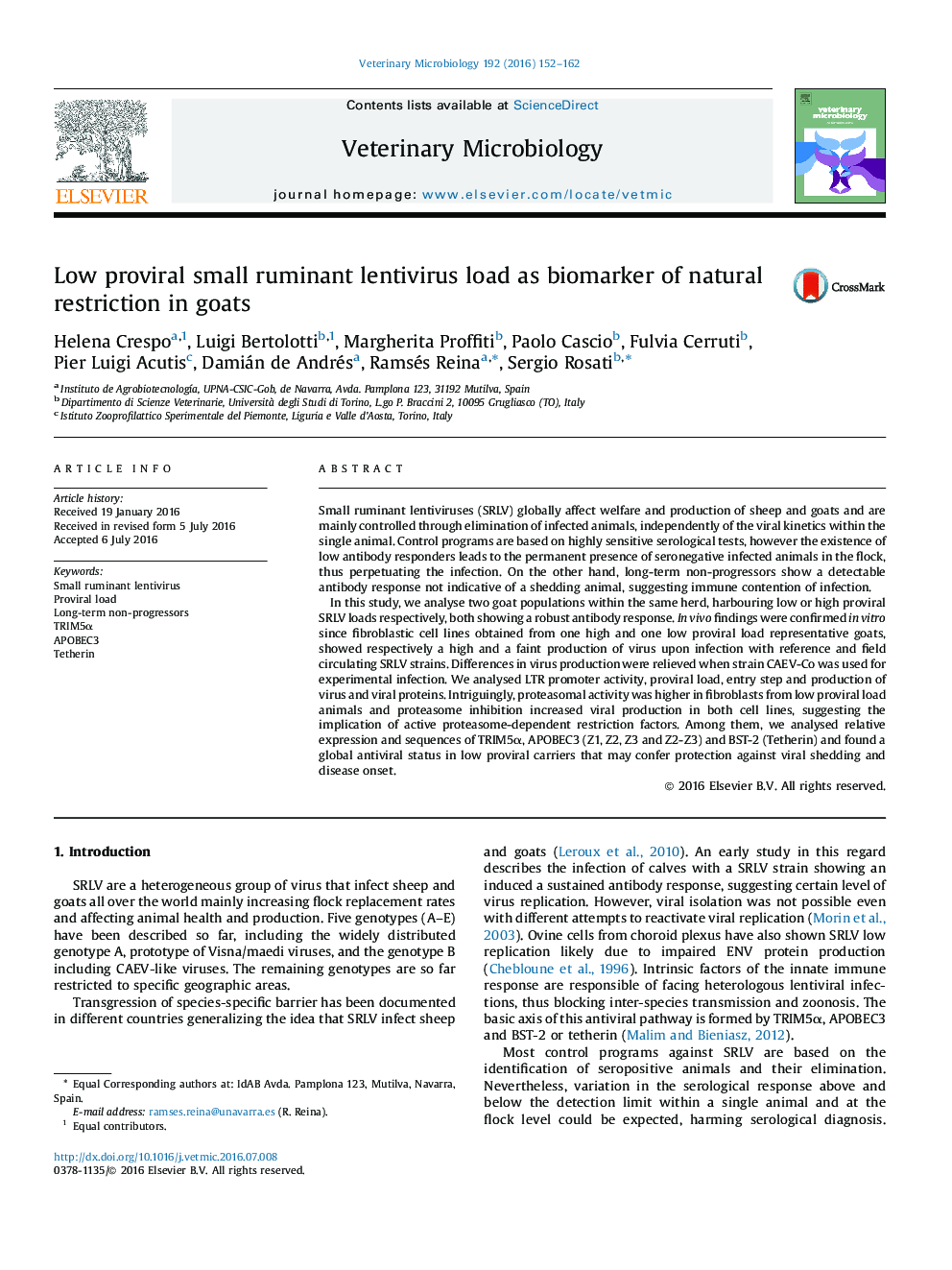| Article ID | Journal | Published Year | Pages | File Type |
|---|---|---|---|---|
| 5799629 | Veterinary Microbiology | 2016 | 11 Pages |
â¢Seropositive goats carrying high or low proviral load have been found within the same flock.â¢Cells from low proviral load animals show a resistance to productive infection in vitro.â¢Restriction found in low proviral carriers maybe related to the presence of restriction factors.â¢Prophylactic measures based on alternative tools may improve SRLV control.
Small ruminant lentiviruses (SRLV) globally affect welfare and production of sheep and goats and are mainly controlled through elimination of infected animals, independently of the viral kinetics within the single animal. Control programs are based on highly sensitive serological tests, however the existence of low antibody responders leads to the permanent presence of seronegative infected animals in the flock, thus perpetuating the infection. On the other hand, long-term non-progressors show a detectable antibody response not indicative of a shedding animal, suggesting immune contention of infection.In this study, we analyse two goat populations within the same herd, harbouring low or high proviral SRLV loads respectively, both showing a robust antibody response. In vivo findings were confirmed in vitro since fibroblastic cell lines obtained from one high and one low proviral load representative goats, showed respectively a high and a faint production of virus upon infection with reference and field circulating SRLV strains. Differences in virus production were relieved when strain CAEV-Co was used for experimental infection. We analysed LTR promoter activity, proviral load, entry step and production of virus and viral proteins. Intriguingly, proteasomal activity was higher in fibroblasts from low proviral load animals and proteasome inhibition increased viral production in both cell lines, suggesting the implication of active proteasome-dependent restriction factors. Among them, we analysed relative expression and sequences of TRIM5α, APOBEC3 (Z1, Z2, Z3 and Z2-Z3) and BST-2 (Tetherin) and found a global antiviral status in low proviral carriers that may confer protection against viral shedding and disease onset.
